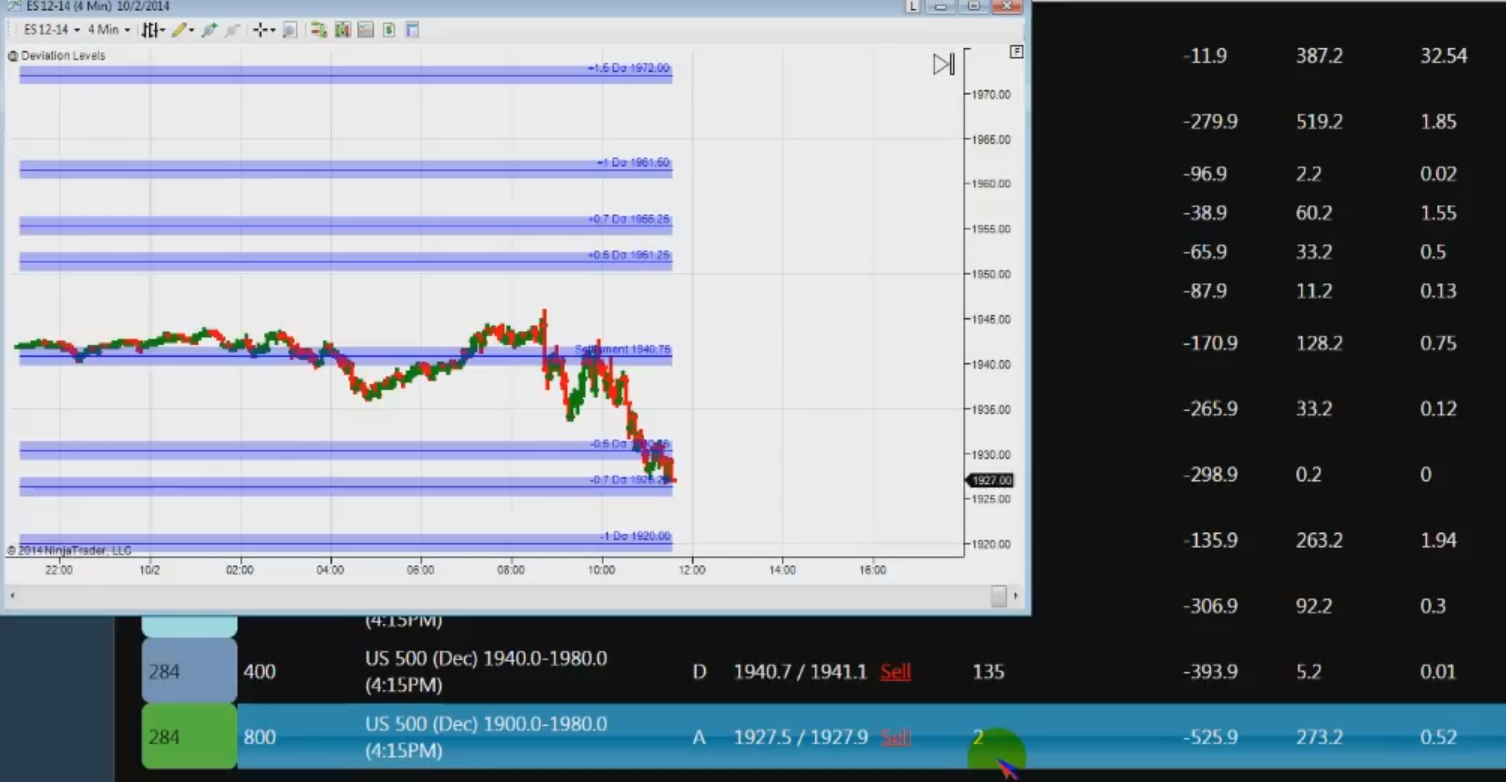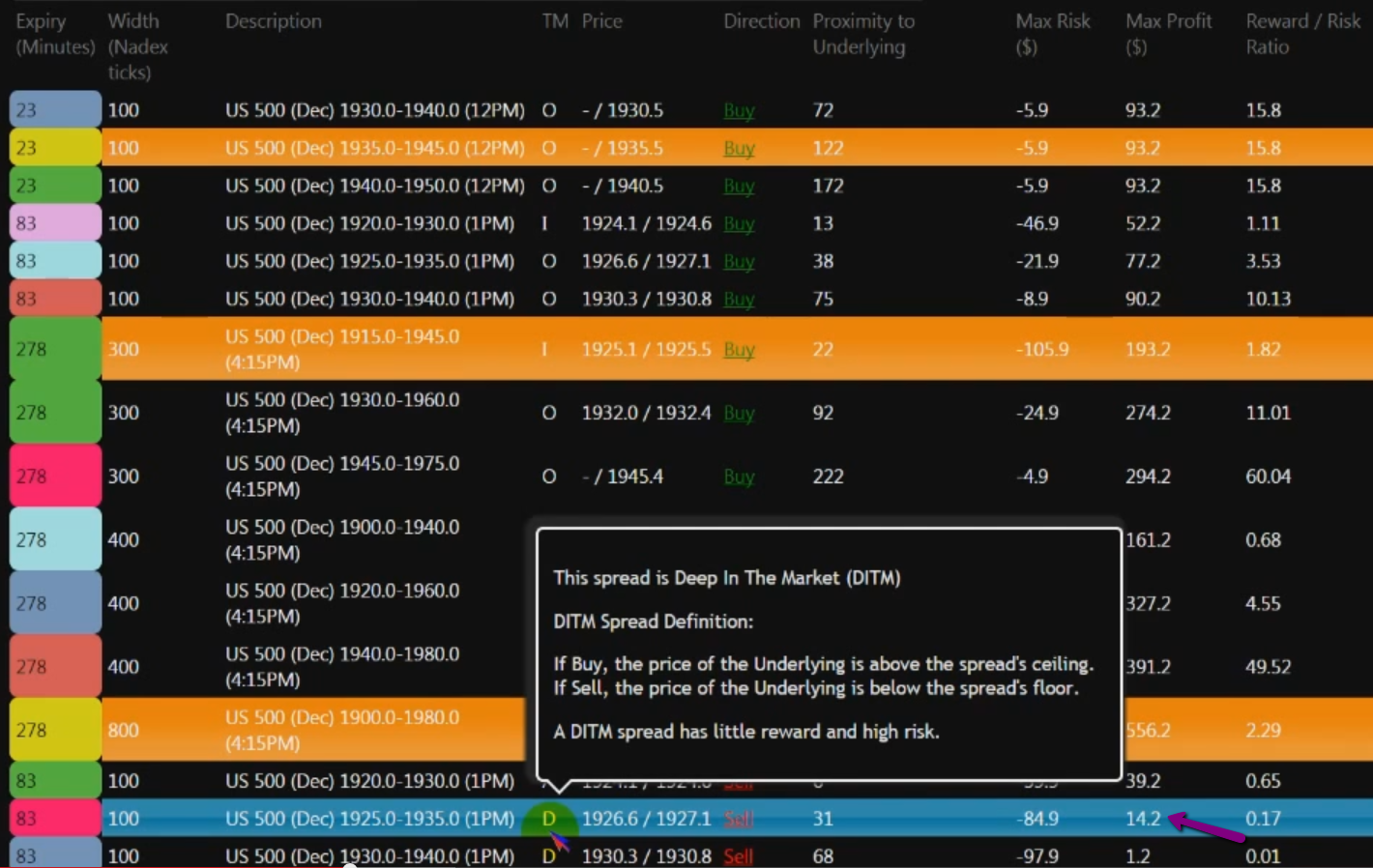By Darrell Martin
Many traders want to know what proximity to the underlying market means. It is a measurement of the distance between the price of the spread and the price of the market. To arrive at the proximity, you subtract one from the other.
In the image shown below you can see that the difference is two ticks. It is important to know that this is measured in Nadex ticks.

It makes a great deal of difference on the instrument on how it ticks. The Russell, for example ticks differently than the NASDAQ. On Nadex, the Russell ticks in 0.1 and NASDAQ ticks in 1.
Proximity is the distance of the price of the spread from the underlying market. If your spread is Out of The Market (OTM), the proximity tells you that if it is equal to your risk, the proximity is the premium or the time value on the spread. You may wonder if it is possible to have more premium than your maximum risk. The answer is no, because in this case, you are dealing with time value and once the time is used up, the premium is gone; it is also used up.
What is the premium on ITM, ATM, OTM or DITM and how can you use proximity to help you figure that out? As stated above, for OTM, the risk will be the premium, in all cases! For In The Market (ITM) or At The Market (ATM) spreads, the proximity distance will be the premium or time value of the spread. The market is trading in between your spread, so if the market did nothing, you would not lose all of your risk. You would only lose the the difference which would be the premium. Deep In The Market (DITM) means that the market is trading above the ceiling on a buy and below the floor on a sell. Your profit is your premium, so even if the market did nothing, you would make max profit.

The purple arrow shows the max profit of $14 if the market did nothing. This example shows a spread being sold deep in the market. The underlying market is already 14 ticks below the floor of this spread so if the market stays right where it is until expiration, the trader will attain max profit of $14.
How far does my trade have to move before it is breakeven? This is not such a great question, but it is one that traders ask repeatedly. With any instrument, the spread itself will have to cover the bid/offer spread to be breakeven. You want to be able to get in and out of the trade before expiration. You’ve got to cover your bid/offer spread in order to break even.
What about proximity? Don’t you have to move the proximity before you break even on the trade? If you bought the contract and held it until expiration when all the premium had expired and become worthless, then yes, that would be your breakeven distance as of expiration. Remember that you don’t pay bid/offer spread at settlement, because you don’t pay to get out of the trade at the bid. It just settles where it settles. However, if you did hold it all the way until expiration, it would have to move the proximity.
Proximity is not breakeven except at expiration when all time value has evaporated. Does it move at a 1:1 ratio? Probably not. The further away the price is from zero, the slower the price of the spread will change. The lower the proximity number is, the faster the spread will move with the underlying market. It will be closer to a dollar-for-dollar ratio. The bigger the proximity number, the slower the spread will move.
All of this information on proximity is important for you to know so that you don’t make false assumptions. It will answer a bunch of questions that you may have had, but it won’t make you money. Use the information to help you understand more about the markets you are learning to trade. Use it as you make decisions. Use it as you learn about ticks and pips. Use it as a stepping stone on your trading path as to how things work in the markets. For information on ways to trade the markets, go to www.apexinvesting.com, a service of Darrell Martin.
